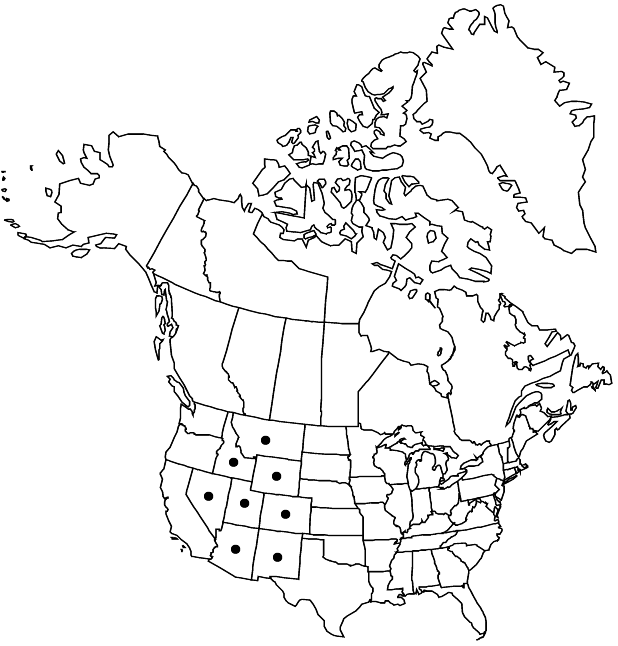Difference between revisions of "Primula parryi"
Amer. J. Sci. Arts, ser. 2, 34: 257. 1862 ,.
FNA>Volume Importer |
FNA>Volume Importer |
||
| Line 32: | Line 32: | ||
-->{{#Taxon: | -->{{#Taxon: | ||
name=Primula parryi | name=Primula parryi | ||
| − | |||
|authority=A. Gray | |authority=A. Gray | ||
|rank=species | |rank=species | ||
| Line 47: | Line 46: | ||
|publication year= | |publication year= | ||
|special status= | |special status= | ||
| − | |source xml=https://jpend@bitbucket.org/aafc-mbb/fna-data-curation.git/src/ | + | |source xml=https://jpend@bitbucket.org/aafc-mbb/fna-data-curation.git/src/f50eec43f223ca0e34566be0b046453a0960e173/coarse_grained_fna_xml/V8/V8_603.xml |
|genus=Primula | |genus=Primula | ||
|species=Primula parryi | |species=Primula parryi | ||
Revision as of 22:29, 16 December 2019
Plants 15–50 cm, herbaceous; rhizomes short, stout; rosettes often clumped; vegetative parts efarinose. Leaves rankly aromatic, indistinctly petiolate; petiole broadly winged; blade without deep reticulate veins abaxially, broadly lanceolate or oblanceolate to oblong-obovate, 1–33(–40) × 1.5–7 cm, thick, margins almost entire or remotely denticulate, apex rounded to acute, surfaces glabrous. Inflorescences 5–25-flowered; involucral bracts plane, unequal. Pedicels arcuate, somewhat thick, 10–50 mm, length 1–6 times bracts, flexuous. Flowers heterostylous; calyx green, often purple tinged, cylindric to campanulate, 8–15 mm; corolla magenta, tube 5–20 mm, length 0.9–1 times calyx, with prominent glands basally and distally, limb 10–25 mm diam., lobes 5–12 mm, apex emarginate. Capsules ellipsoid to cylindric, length 1 times calyx. Seeds without flanged edges, reticulate. 2n = 44.
Phenology: Flowering summer.
Habitat: Subalpine bogs, streamsides, wet meadows
Elevation: 2700-4200 m
Distribution

Ariz., Colo., Idaho, Mont., Nev., N.Mex., Utah, Wyo.
Discussion
Primula parryi has the largest and most showy plants of the native North American primroses, growing to almost 50 centimeters in protected sites. It is common on subalpine streamsides and also occurs on the alpine tundra in wet areas near snowmelt seeps. The strong skunky odor of this species is unique in the North American primroses, often lingering even on herbarium specimens. It is the most common species of the genus in the western United States.
Selected References
None.